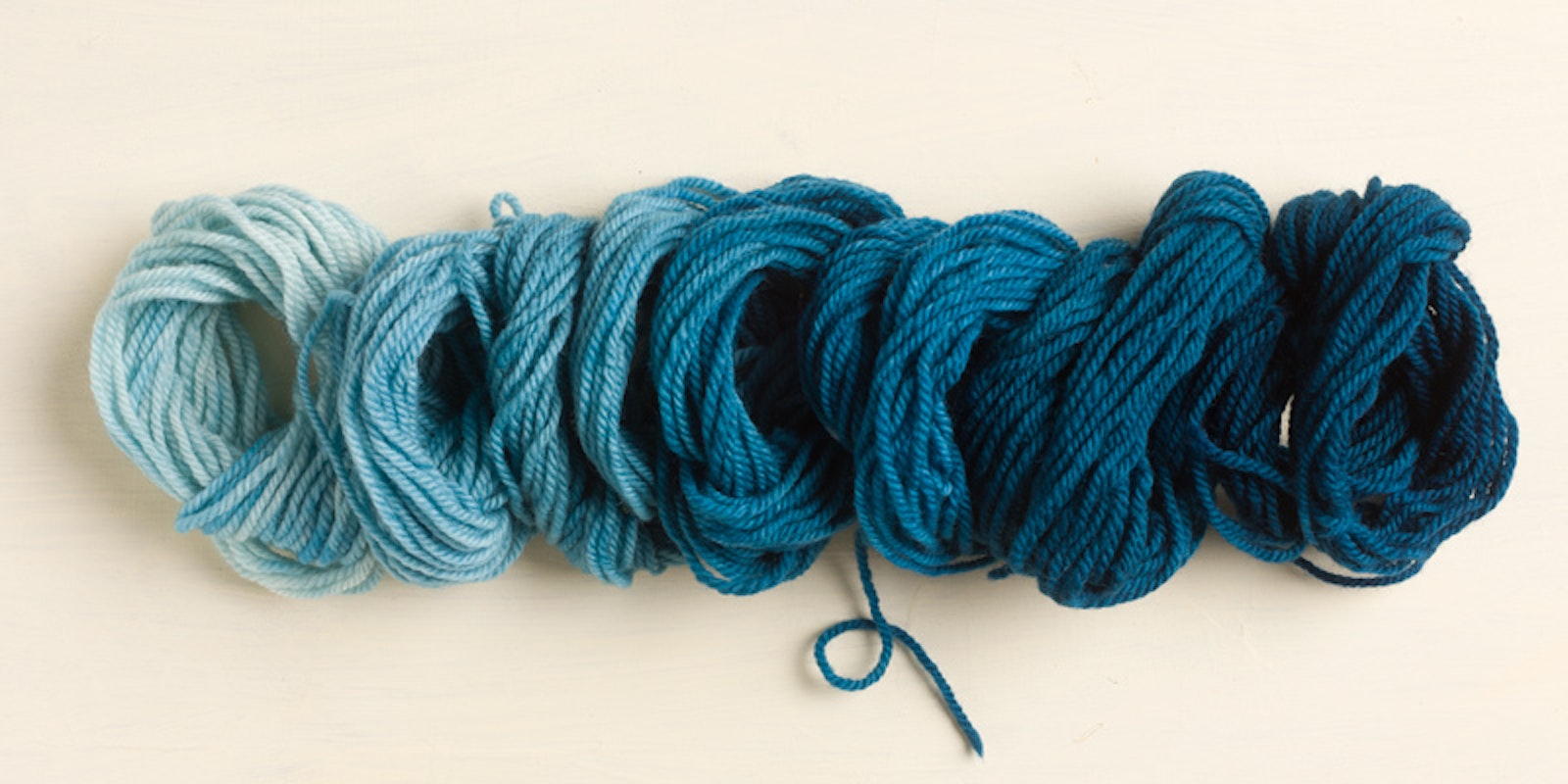 | |
Fiber Gets Earthy . . .
My parents learned to spin and weave in the 1970s as part of the "back to the land" movement. They also planted a huge vegetable garden, kept chickens, and canned food—things their parents had been delighted to stop doing in the previous generation. As a child, I remember foraging for edible mushrooms in the New England woods, guided by our local mycologist (and bona fide shaman!). The dishes we cooked over campfires weren't fun for me as a fussy eater, and the only ones I liked were the inoffensively named Chicken of the Woods and Puffballs.
Twenty-five years later, I learned that we could have used those very mushrooms as dyestuffs, creating yellow and orange colors.
 Just a few examples show the range of colors that can be extracted from mushrooms. Photo by Joe Coca. | |
Fun with Fungi
Carol Lee discovered the dye possibilities of mushrooms around the same time I was gingerly tasting them. A passionate spinner, weaver, and dyer, she heard about mushroom dyeing at a conference and began her own explorations, eventually foraging for mushrooms across North America and in Scandinavia. Learning from experts such as Miriam Rice, she discovered an amazing array of colors that could emerge from the plainest-looking fungi. Over the years she has become an expert at dyeing with mushrooms, meeting mycology enthusiasts around the world and hosting dye retreats at her Encampment studio.
 Carol Lee holds a Cortinarius semisanguineus mushroom along with samples of yarn using different mordants. Photo by Jessica Gates. | |
The owner of the Sheep Shed Studio in Encampment, Wyoming, Carol uses synthetic dyes to produce dyed rovings, but she dyes with mushrooms for her own fiber arts. During a visit this spring, her backyard studio was bubbling with dyepots containing an array of colors (including her favorite, the red Cortinarius semisanguineus). As Carol pulled out bags of dried mushrooms and jars of brightly colored dyes, she talked about using ammonia to bring out colors and the role of mordants in mushroom dyeing. She loves the process of dyeing with mushrooms so much that she's written a book called Mushrooms Are To Dye For. She shares her love of mushroom dyeing in two videos in this issue of Colorways.
More to Explore
This issue of Colorways includes lots of ways to color your cloth, from resist dyeing to painting mineral pigments directly on fabric. Explore the magical world of color for yourself.


